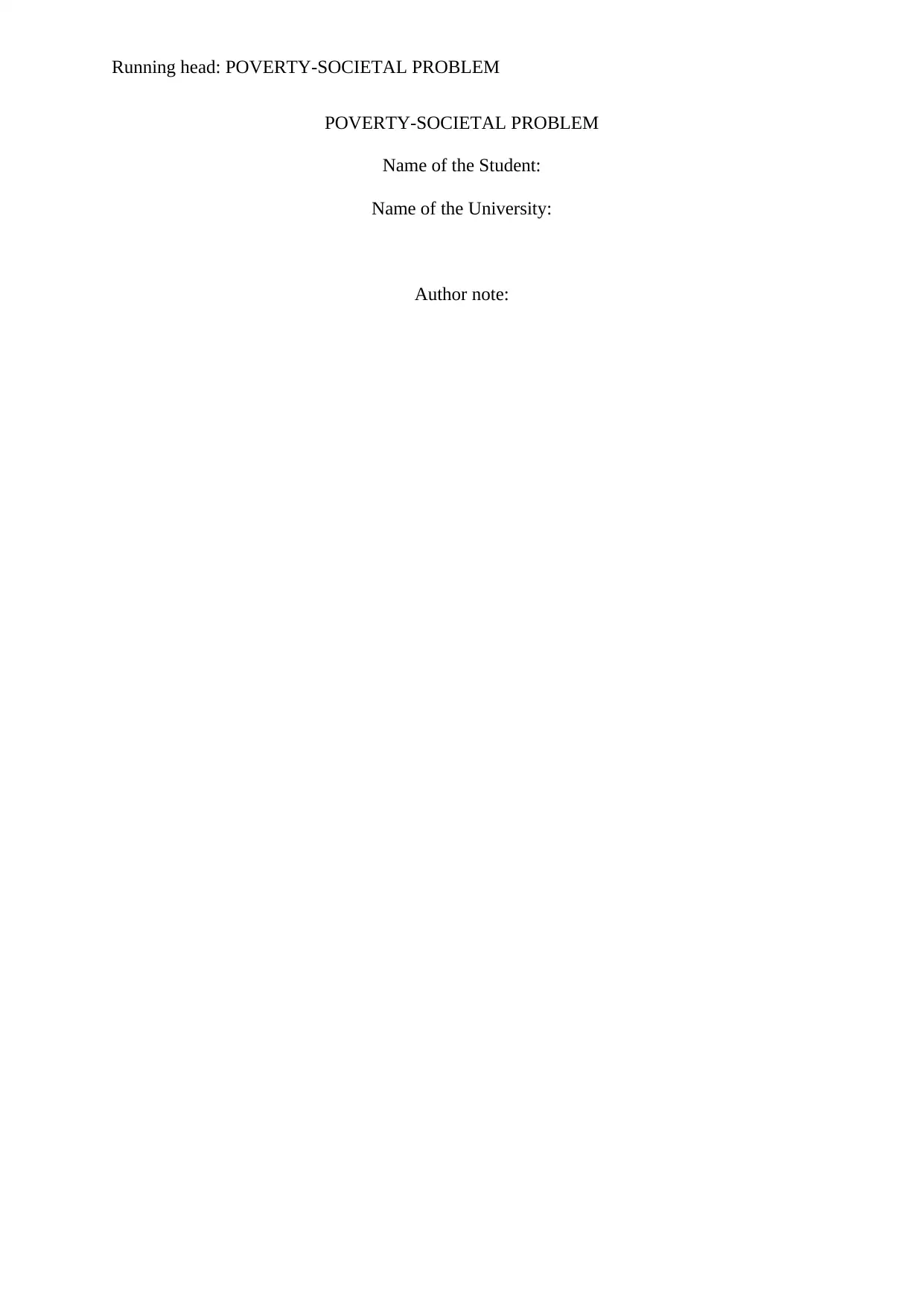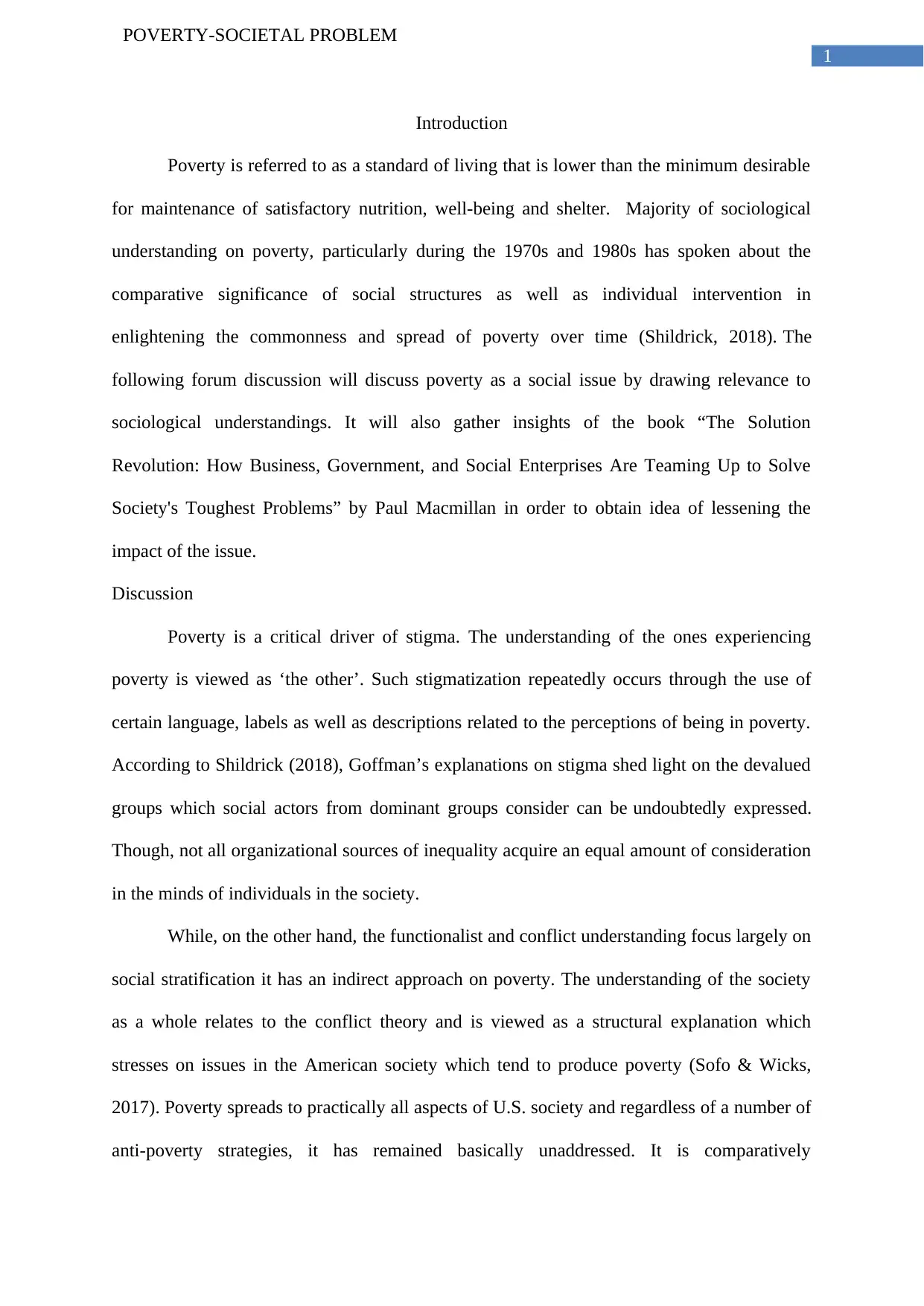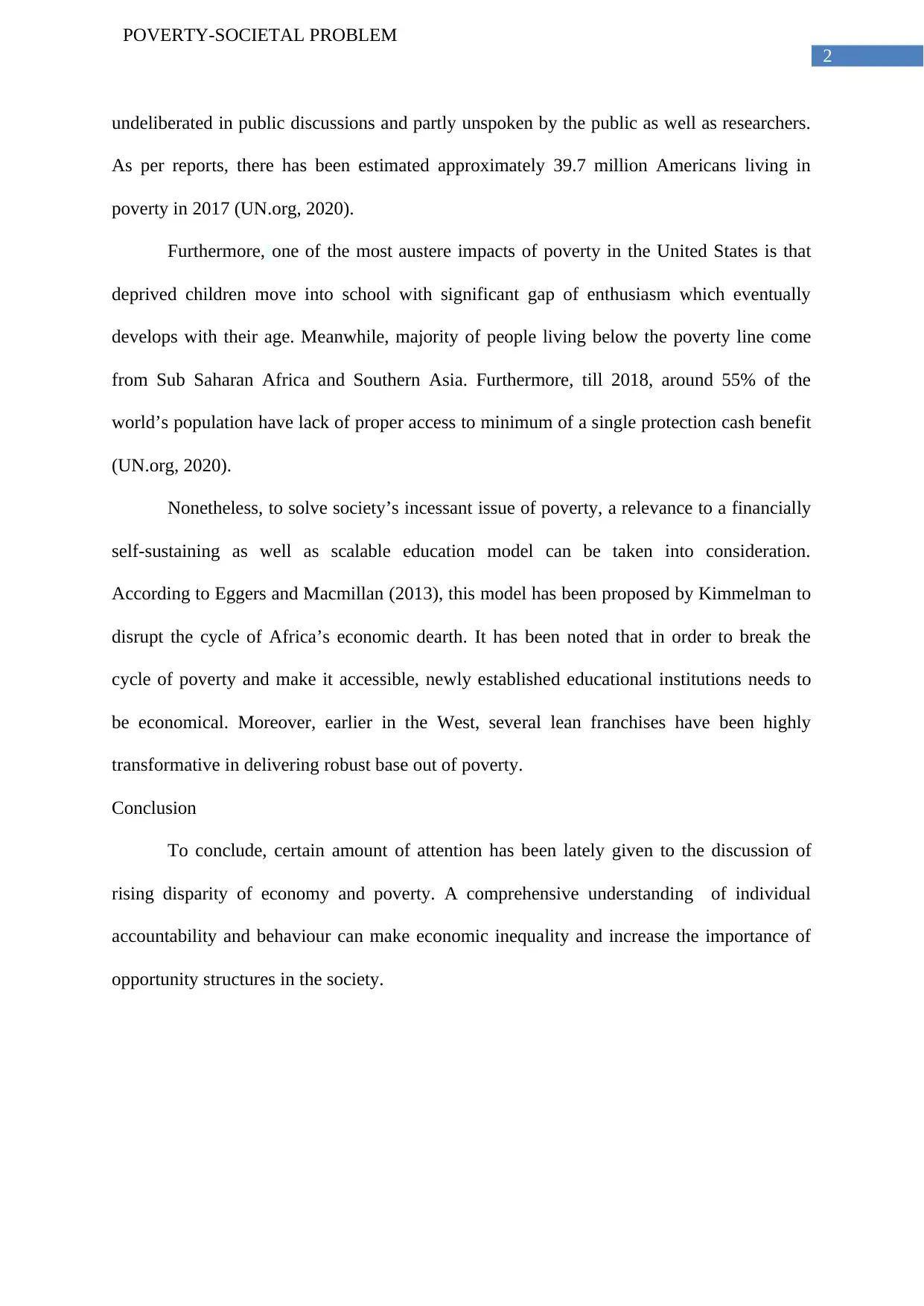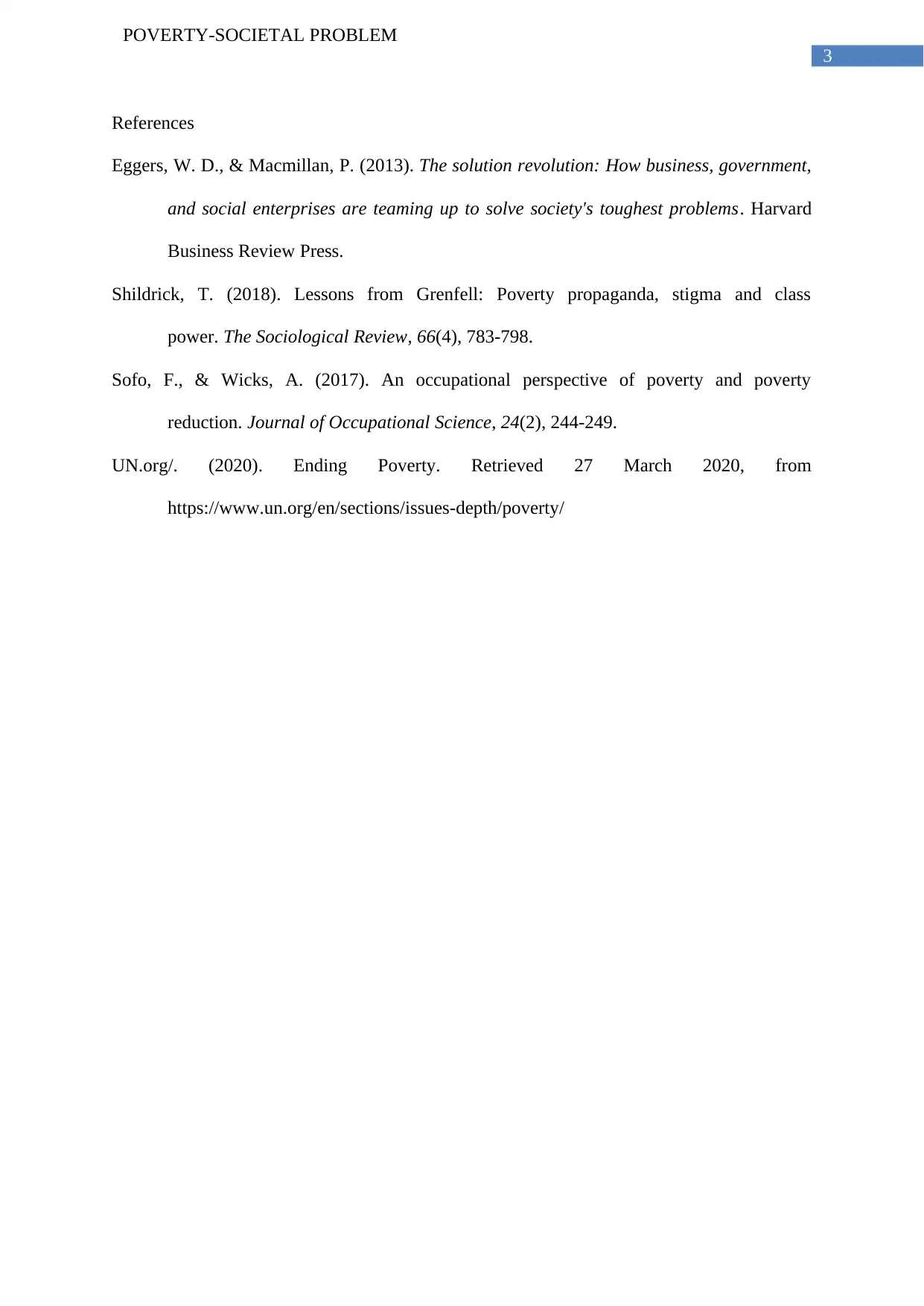Poverty as a Societal Problem: Sociological Analysis and Solutions
VerifiedAdded on 2022/09/01
|4
|755
|23
Discussion Board Post
AI Summary
This discussion post examines poverty as a critical societal issue, drawing on sociological perspectives to understand its prevalence and impact. The author explores the stigmatization associated with poverty, highlighting how societal views and language contribute to the marginalization of those experiencing poverty. It references sociological theories, including Goffman's work on stigma and the functionalist and conflict theories, to provide a comprehensive analysis of poverty's structural roots. Furthermore, the post discusses the impact of poverty on education, particularly the achievement gap faced by children from impoverished backgrounds. The discussion also considers potential solutions, such as financially sustainable education models, referencing 'The Solution Revolution' by Eggers and Macmillan, to break the cycle of poverty. In conclusion, the post emphasizes the importance of addressing economic inequality and the significance of opportunity structures in society.
1 out of 4











![[object Object]](/_next/static/media/star-bottom.7253800d.svg)